Last Updated on September 5, 2023 by Grant
When people think of vacationing in Florida, they generally picture beaches and theme parks; not national parks. What you may not realize is that there are three national parks and a national preserve all within an easy drive from Miami. These South Florida national parks are a great way to escape the hustle and bustle of the big city yet are still easily accessible.
From Miami, you can take a day trip to Biscayne National Park, Everglades National Park or Big Cypress National Preserve. It’ll take a few hours to get to Key West, which would be your starting point to visit Dry Tortugas National Park, but it’s an easy (and beautiful) drive. Depending on exactly what you want to do, it is easy to see all of these parks within about a week.
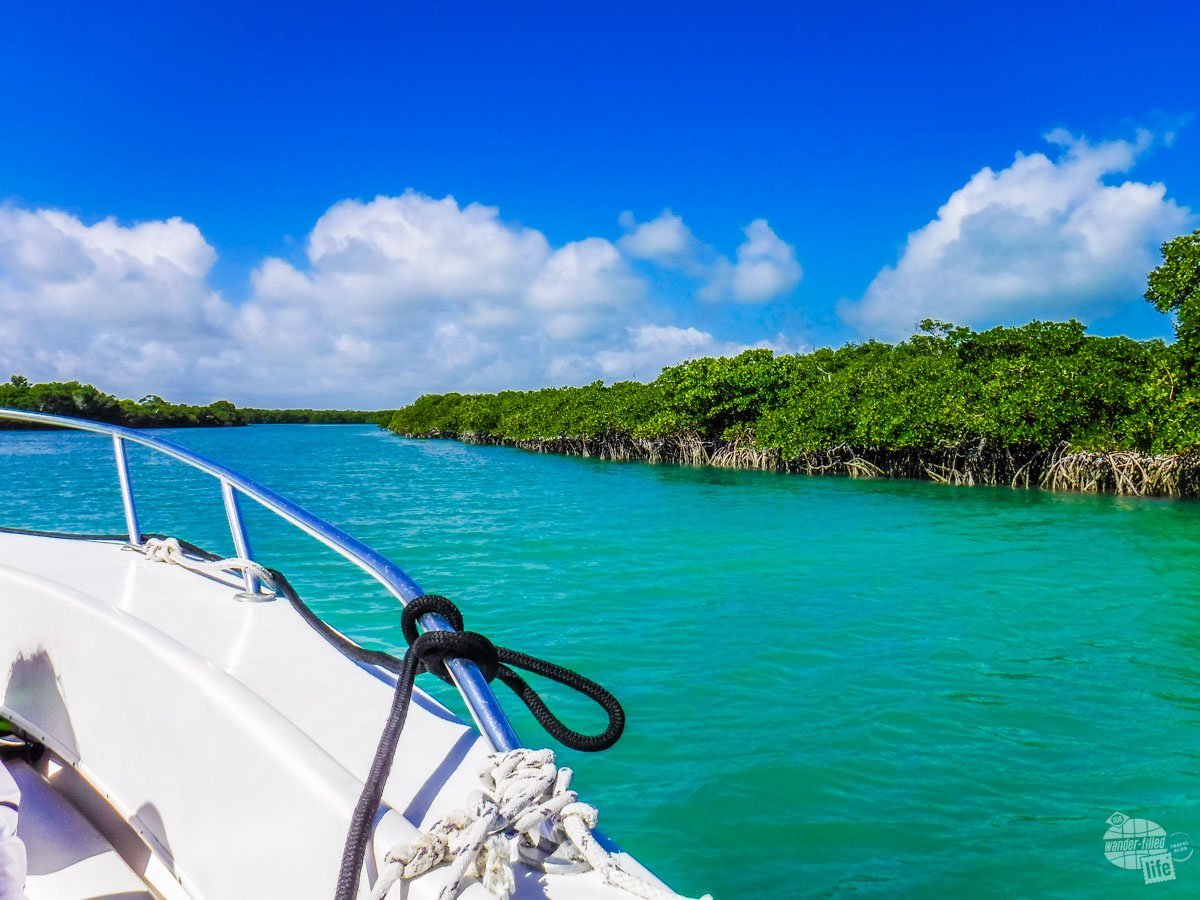
(Disclaimer: When we link to places where you can buy our stuff or places we stayed, we are using special codes that earn us commissions on the sales at no additional cost to you. Please see our Review Policy for more information.)
When to Go
We have now visited most of the South Florida national parks twice, both times during our week-long break in February. While you aren’t always guaranteed great weather in Florida at that time of year, we enjoyed warm temperatures and mostly sunny skies both times.
I’m sure you know that Florida temperatures can be quite high in the summer. For that reason, most folks likely would prefer to visit somewhere cooler at that time of year. Temperatures are not the only weather consideration for the South Florida national parks, though. You also want to consider whether it’s the dry season or wet season.
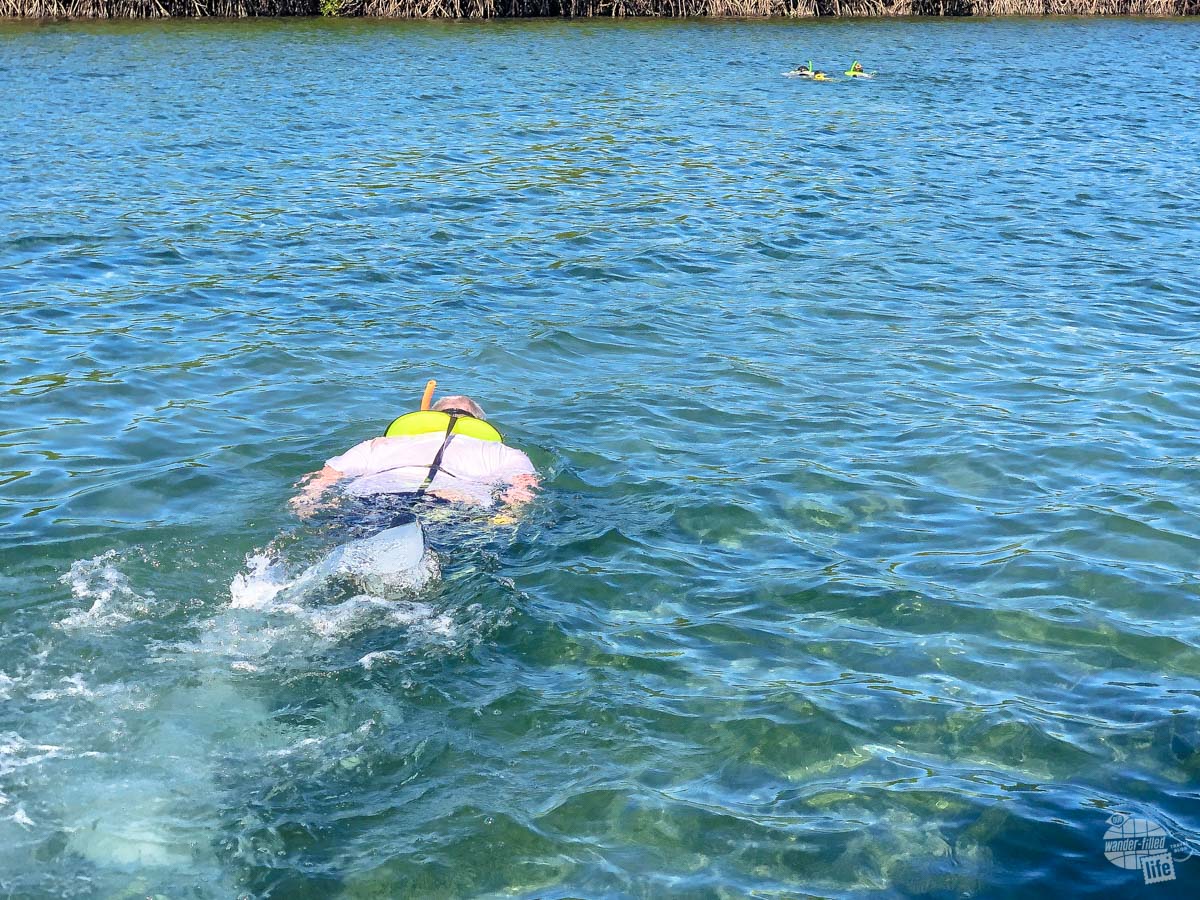
The rainy season typically runs from the middle of May through November. During this time, South Florida gets quite a bit of rain. The dry season follows that, from December through April. During this time, the area gets only a little rain and water starts drying up.
Finding the right time to visit can be tricky. We all know that sightseeing in the rain is never fun. On the flip side, the Everglades just isn’t the same when the water starts drying up. That is what makes January or February a great time to visit.
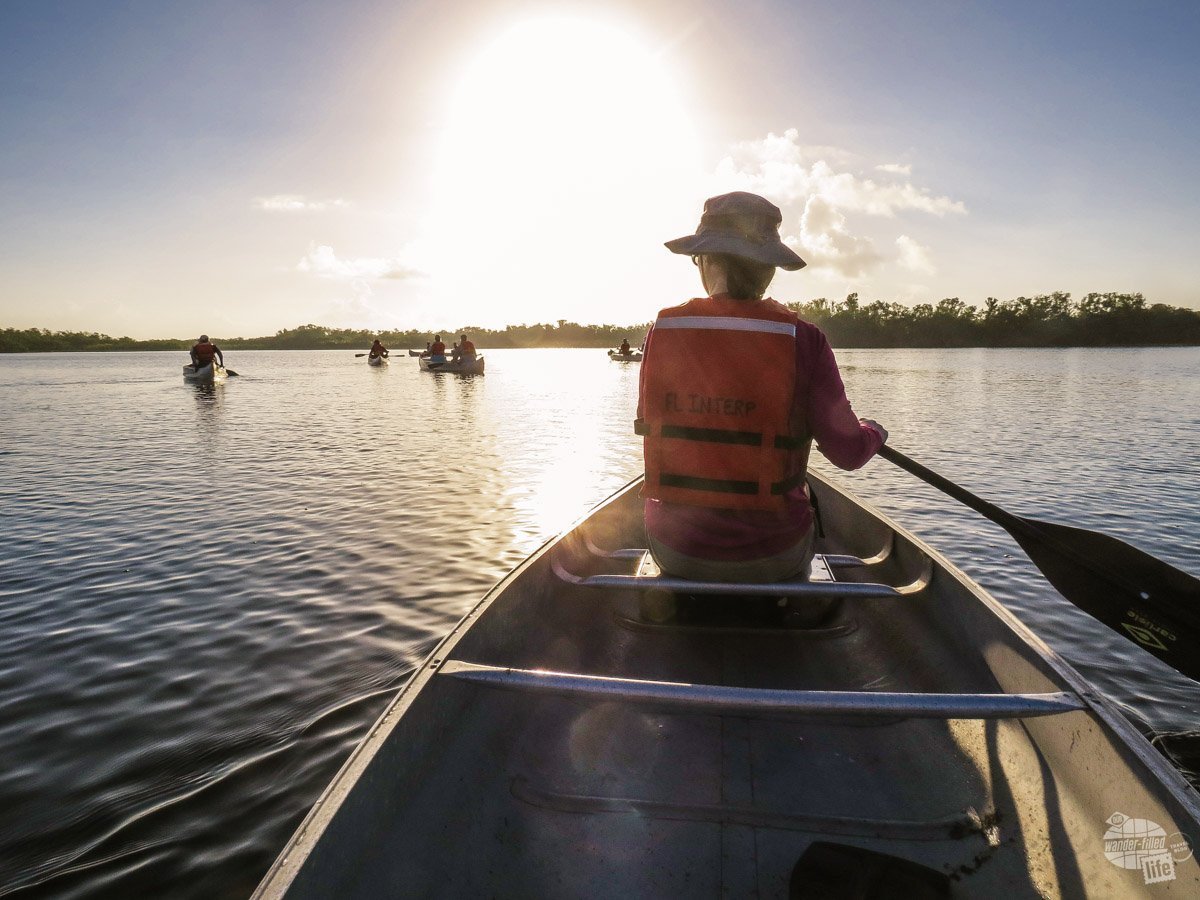
In February, we experienced highs in the 70s and low 80s, with lows in the 60s during most of our visit. We also could tell water levels were dropping, so I wouldn’t want to visit much later in the dry season.
Biscayne National Park
When visiting Biscayne National Park, my first suggestion is to plan enough time to get out on the water. We first visited this park in 2012 and only had about half a day. All we did was stop at the visitor center and walk the very short mainland trail. While that was enough to “check it off the list,” we missed what the park is really there for: the water.
Indeed, 95% of Biscayne National Park is underwater. It was created to preserve Biscayne Bay and the surrounding area from development. If you really want to experience what the park is all about, do yourself a favor and get out on the water.
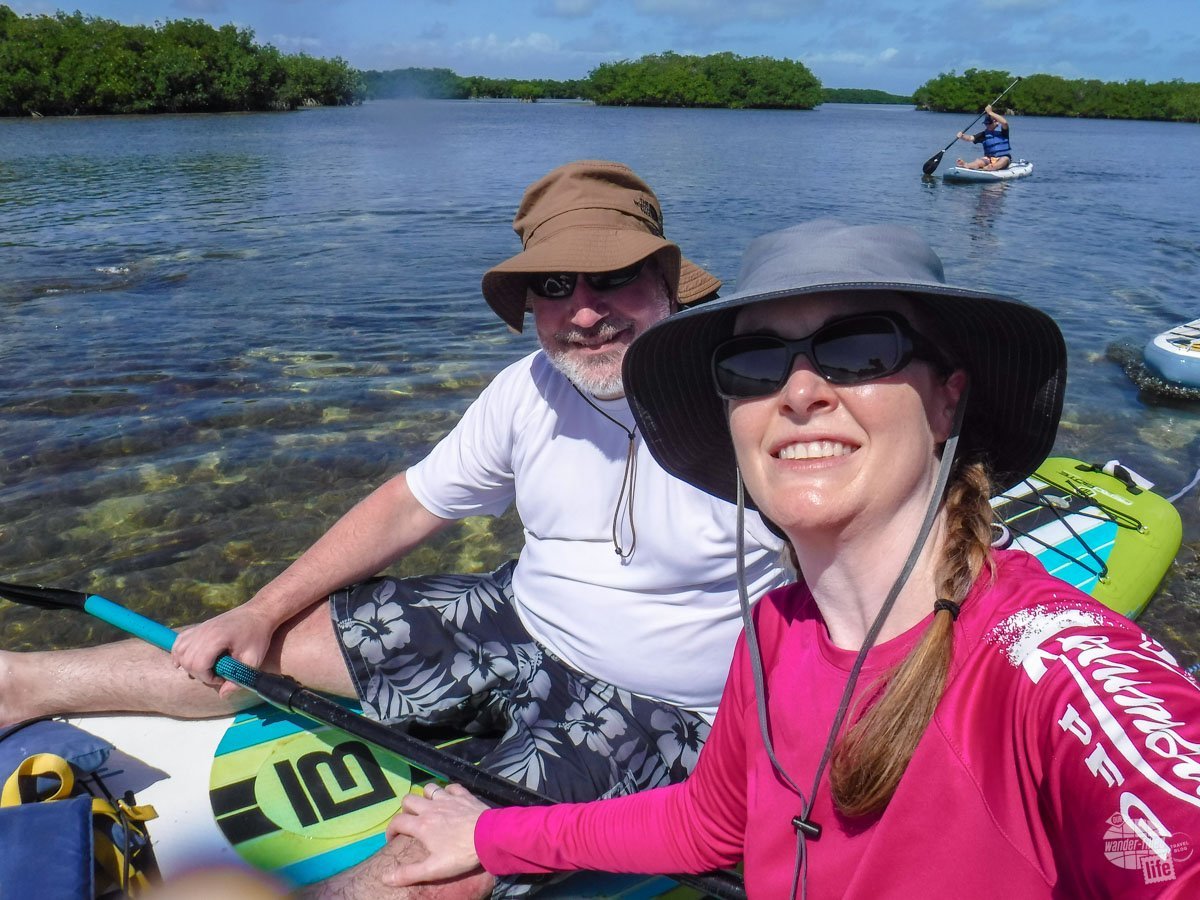
The best way to see the park is on a tour with the Biscayne National Park Institute. Whether you choose a relaxing 3-hour boat tour of Boca Chita Key or an all-day paddleboarding and snorkeling tour, you’re sure to see a lot and learn more about the park.
We did the two tours mentioned above and truly enjoyed both of them. The guides on both tours provided a great history of the park and helped us to truly appreciate its purpose.
Yes, you’ll see more on a snorkel or kayaking tour. Those also require a bit more in terms of physical activity and interest. A visit to Boca Chita Key, however, is accessible for everyone and takes you to one of the most picturesque parts of Biscayne National Park.
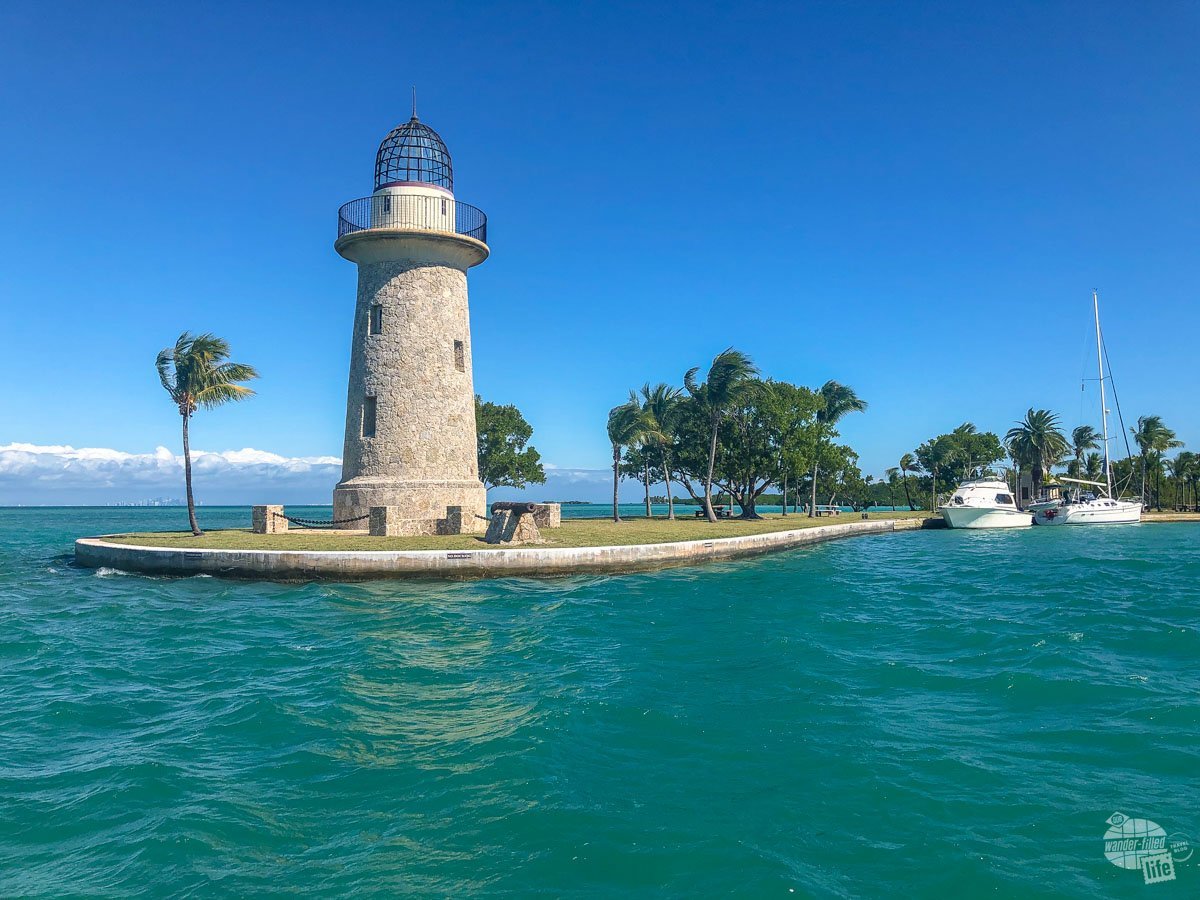
Whatever your interests or ability, we highly encourage you to schedule a full day so you’ll have enough time for a tour. You’ll undoubtedly get a greater understanding of and appreciation for this unique national park.
Read more about visiting Biscayne National Park.
Everglades National Park
As the country’s largest subtropical wilderness, Everglades National Park is home to an abundance of wildlife. No, it’s not teeming with bison, elk or bears like many other national parks. Instead, you’ll find alligators, manatees and, likely, more birds than you can imagine.
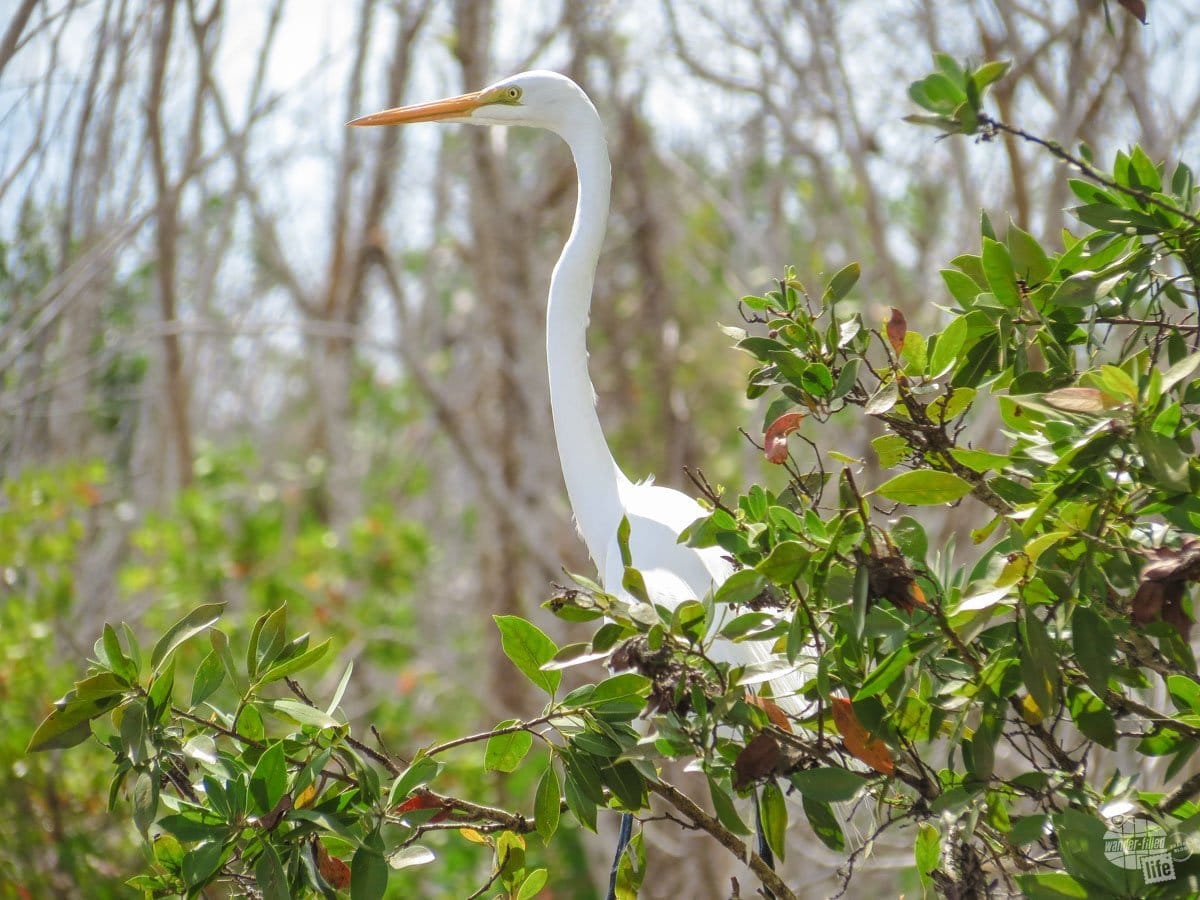
The Everglades is also home to the American crocodile, making it the only place in the world where you can find both alligators and crocodiles. And, while it’s extremely unlikely that you’ll see one, it is also home to the Florida panther.
It’s not all about wildlife, though. With just a couple of feet of elevation change, you’ll see vastly different ecosystems. While much of the Everglades is a “river of grass,” you’ll also find mangroves, tropical hardwoods and cypress. It is this diversity that makes Everglades National Park so interesting.
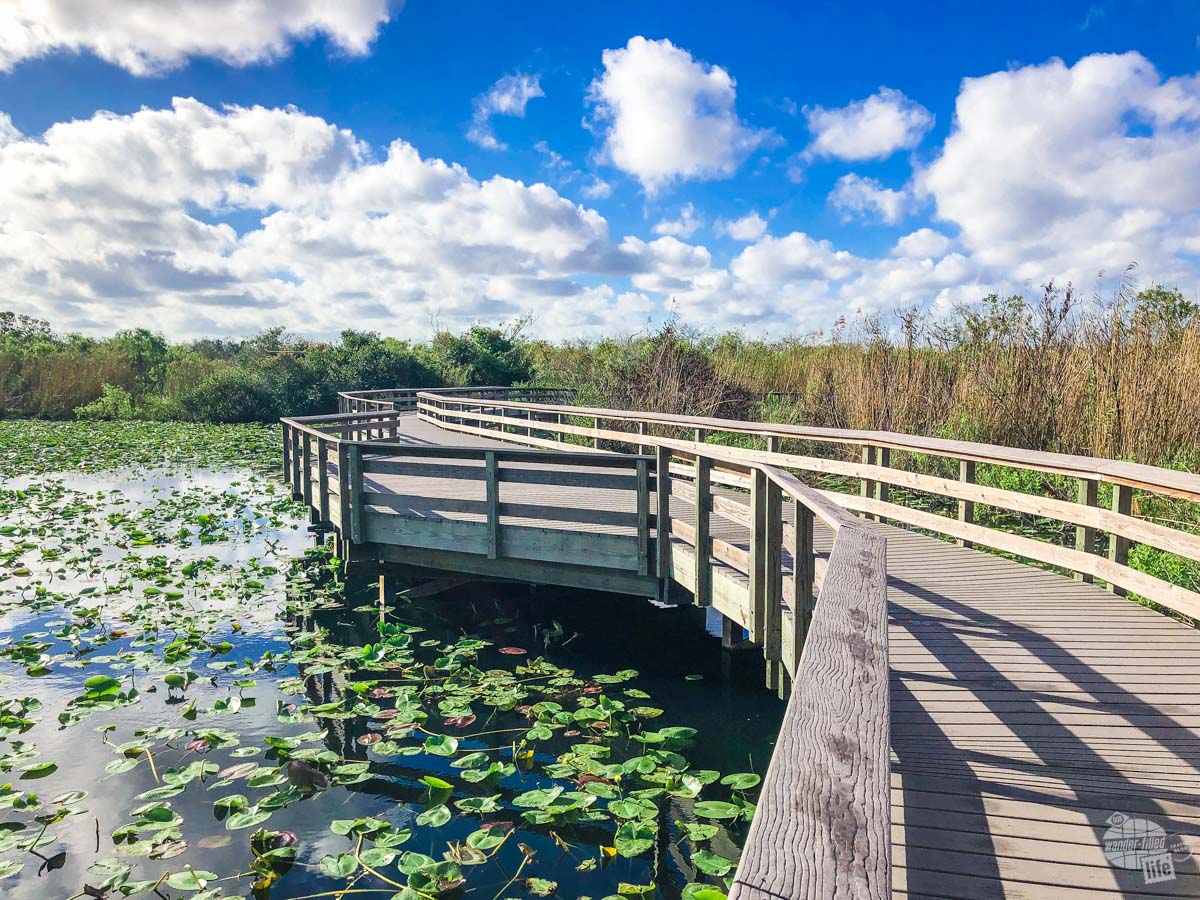
You’ll need at least one full day to see the highlights of Everglades National Park. Having a second or even third day would make your visit much more complete. A stop at the Ernest Coe Visitor Center and a walk along the Anhinga and Gumbo Limbo Trails are absolute must-dos. That will take you about a half-day.
With additional time, you can drive the main park road to the Flamingo area or head north to the Shark Valley area. Along the main park road, you’ll find a number of pull-outs and short walks through various ecosystems. Along Tamiami Trail, near Shark Valley, you’ll find several airboat tour operators. An airboat tour is a fun and unique way to get into this habitat.
Like Biscayne National Park, we highly recommend getting out on the water. We took both an airboat tour and did a canoe tour. There’s only so much you can see from the land and to truly experience the Everglades you gotta get out on the water.
Read more about Things to do in the Everglades and Big Cypress.
Big Cypress National Preserve
Just northwest of Everglades National Park, you’ll find Big Cypress National Preserve. As a National Preserve, Big Cypress preserves the land and allows for recreational activities such as hunting and off-road exploration (with a swamp buggy or other appropriate vehicle). You’ll still find the same “river of grass” as in Everglades National Park but you’ll also find deeper cypress swamps.
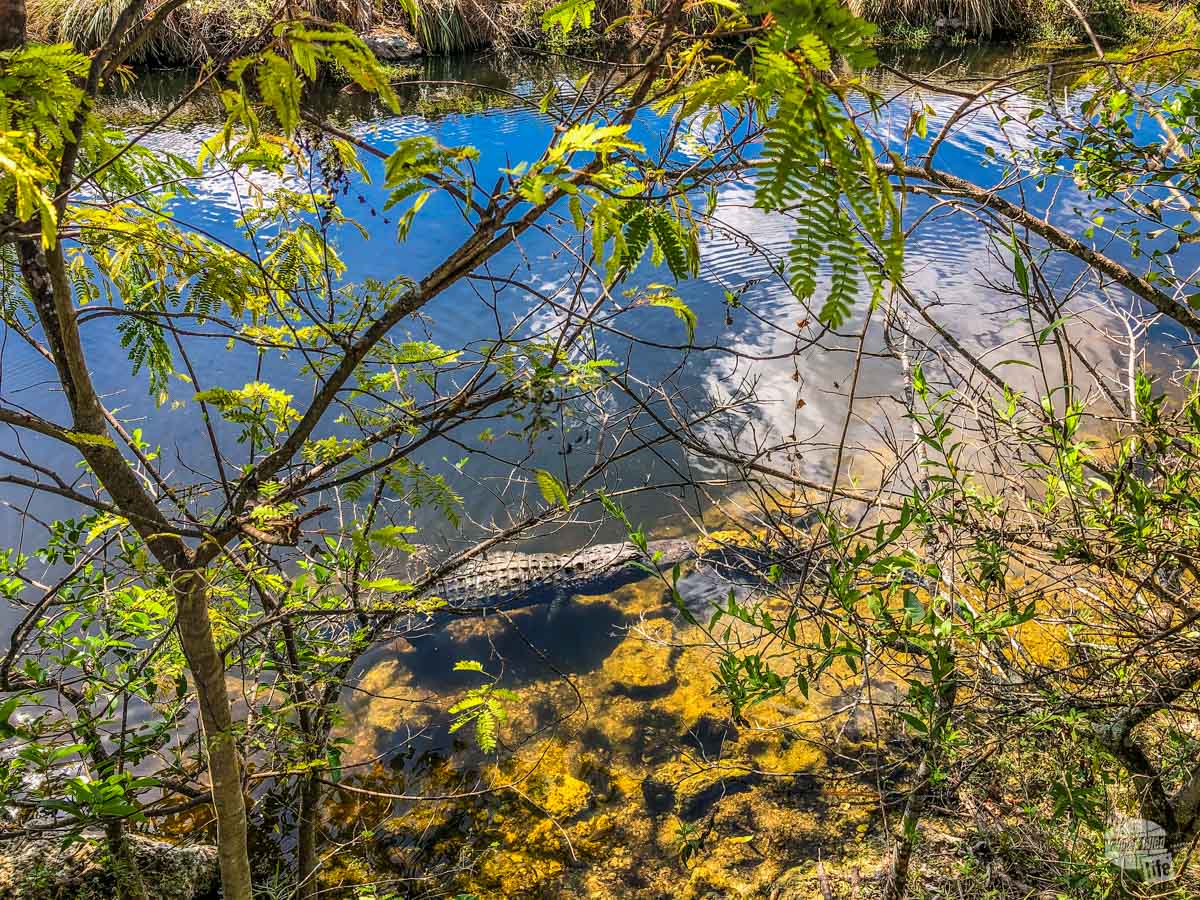
As always, we suggest stopping at the visitor center. Big Cypress has two: the Oasis Visitor Center, run by the National Park Service and the Big Cypress Swamp Welcome Center, an interagency collaboration. While both are great, we’d suggest Oasis as you’ll find the park film there.
In terms of things to do, our must-do suggestion is to drive the Loop Road. I’d suggest driving it from west to east, as you head back towards the eastern boundary of Big Cypress NP and Shark Valley of Everglades NP. The drive will take about 1.5 hours, depending on how often you stop.
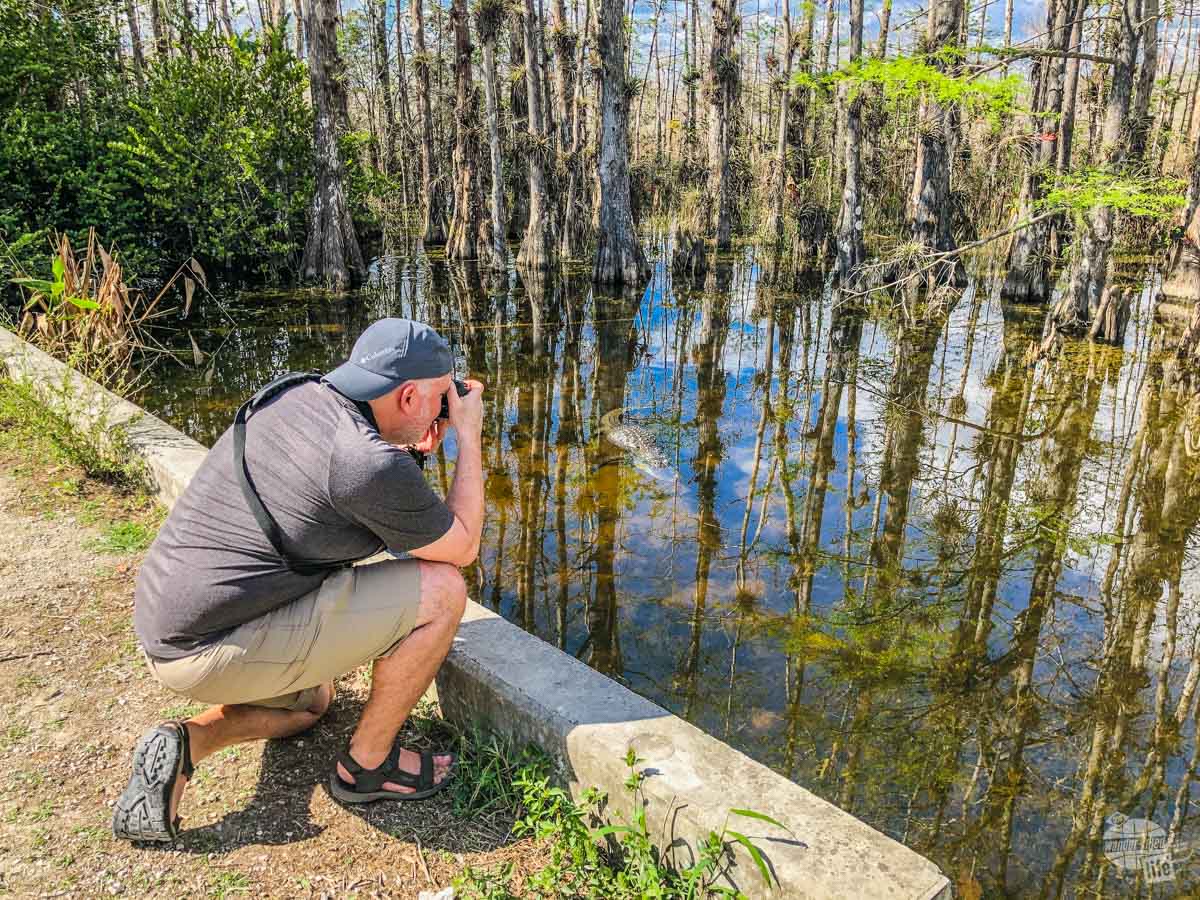
Along the drive, be sure to stop at the culverts. This is where you’ll find wildlife, which will likely include fish, birds and alligators. I’d also suggest a stop at Tree Snail Hammock Trail. Here, look for the namesake tree snails, which basically “hibernate” on the trees during the dry season.
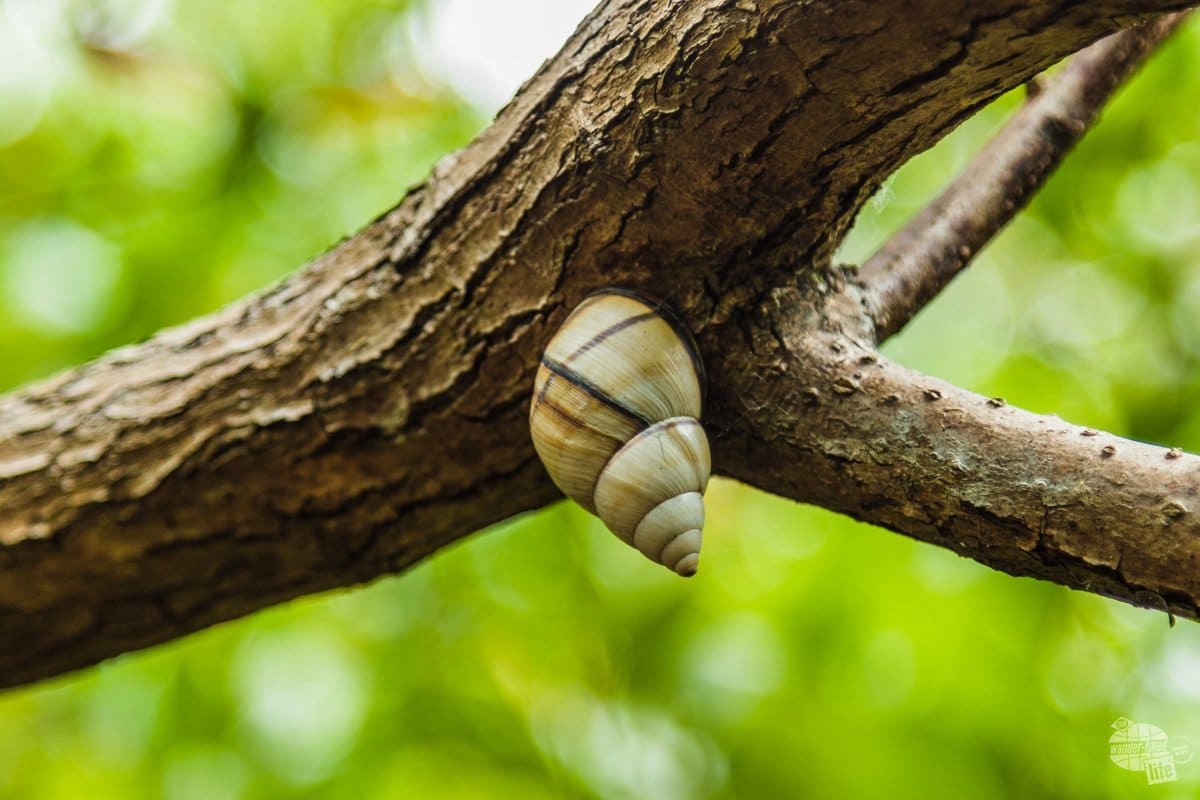
You can certainly see the highlights of Big Cypress National Park in about a half-day. I’d suggest combining your visit to Big Cypress NP with an airboat tour of the Everglades, a stop at Shark Valley or a visit to Ten Thousand Islands, the Everglades’ gulf coast region.
Where to Stay in Miami
While there are a few campgrounds in Everglades and Big Cypress, they offer electric-only; there are no water or sewer hookups. There are also some glamping tents in Everglades National Park. If you’re looking for something more traditional (i.e. more comfortable), you’ll need to head outside the park.
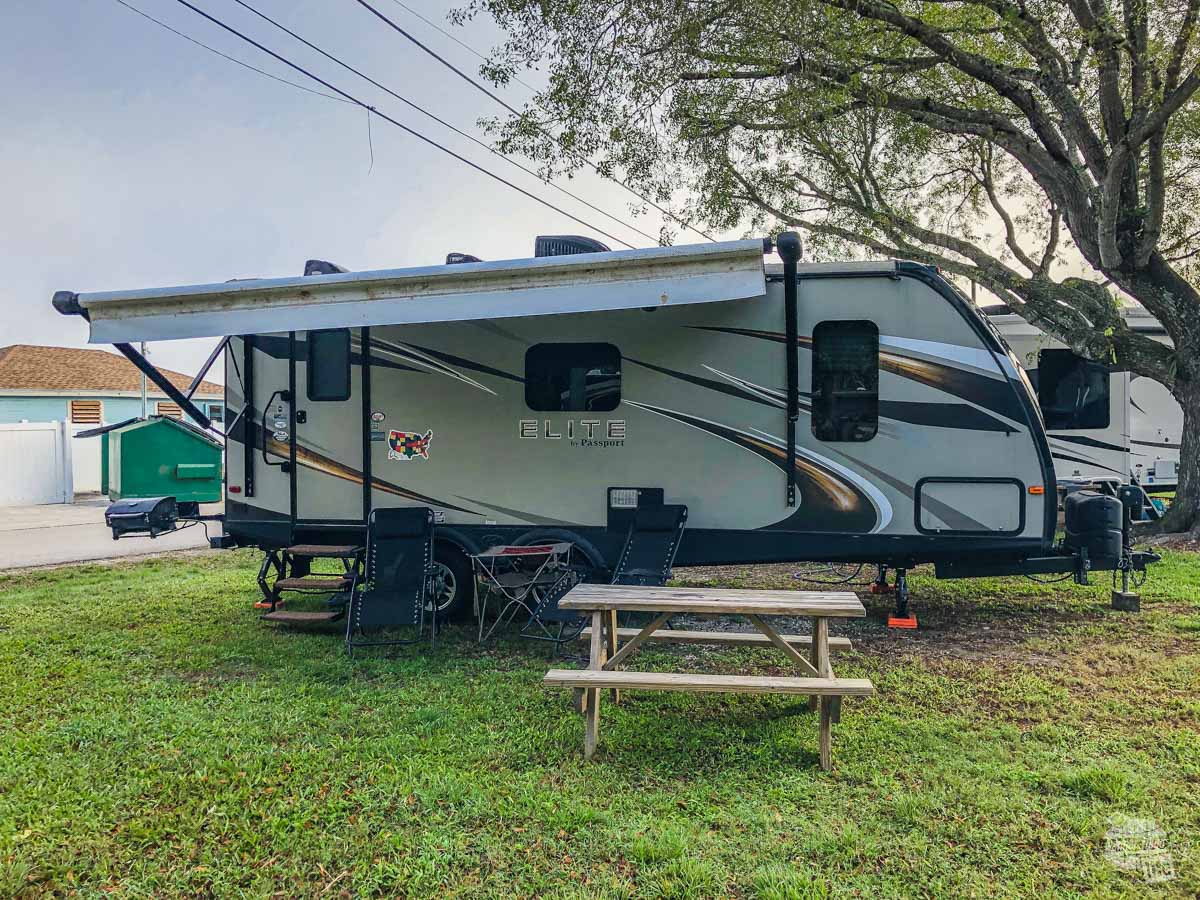
Biscayne, Everglades and Big Cypress are all easily accessible from Miami or Homestead. As you might guess, you can find just about any hotel you might want in the area. Yes, you might have to drive an hour or more, depending on where you want to go in the park, but it’s fairly easy driving once you’re out of the city.
In terms of camping, we stayed at Miami Everglades RV Park. While it has a Miami address, the RV park is actually located just north of Homestead in an agricultural region. We found it to be very centrally located to all three of the South Florida national parks in the Miami area.
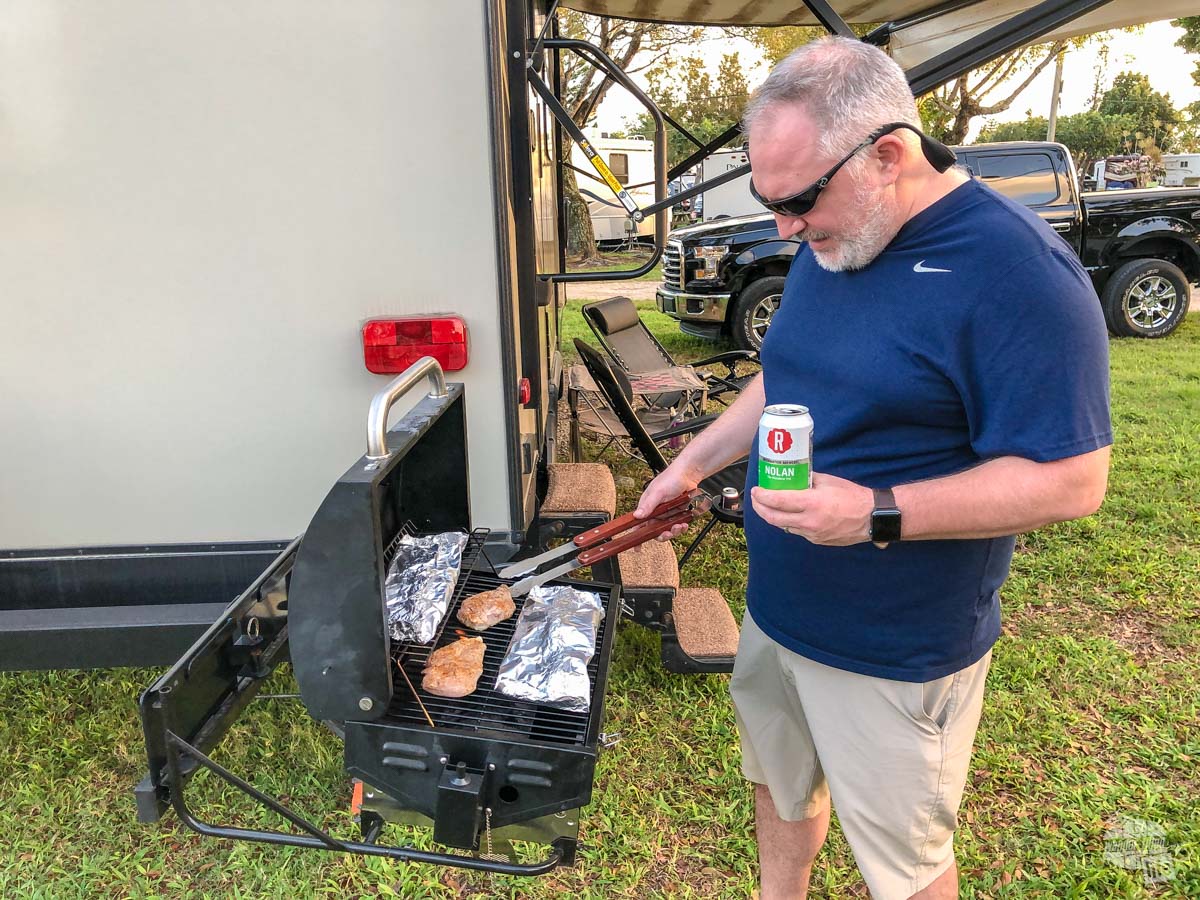
Yes, the RV park is home to many snowbirds and other permanent or long-term residents. And, yes, it’s pricey. That is true for most campgrounds in this area, though. Thankfully, the campground had plenty of amenities and friendly campers. Just be sure to ask for a site not right next to the onsite water-treatment operation, which is both noisy and smells.
Read our in-depth campground reviews here.
Dry Tortugas National Park
Located 70 miles west of Key West, Dry Tortugas National Park is certainly the most remote of the South Florida national parks. While it is not an easy park to get to, it is well worth the time, effort and money that it takes. The 100 square mile park consists of seven small islands. The highlight of the park is Fort Jefferson, located on Garden Key.
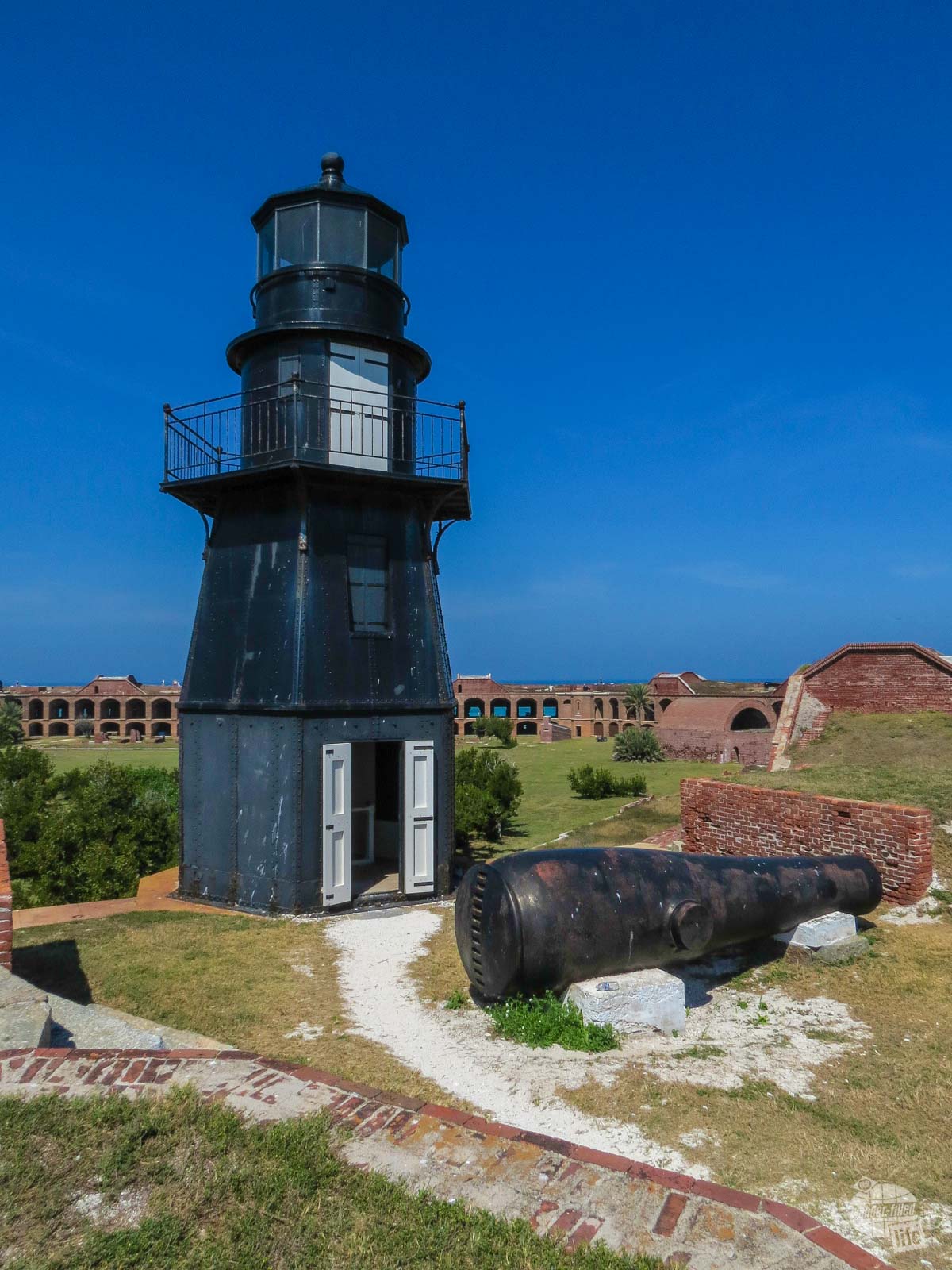
Fort Jefferson, built in the mid-1800s, provided a much-needed harbor for ships in the Gulf of Mexico and Straits of Florida. During the Civil War, Union warships used the harbor to interrupt Southern shipping. The fort was also used as a prison for Union deserters. Its most famous prisoner was Dr. Samuel Mudd, who treated John Wilkes Booth.
No visit to Dry Tortugas National Park is complete without a tour of Fort Jefferson. As you might expect, there are also plenty of opportunities for swimming, snorkeling, diving and boating. You can even camp on Garden Key (just outside the walls of the fort), though you must bring all your own supplies, including freshwater.
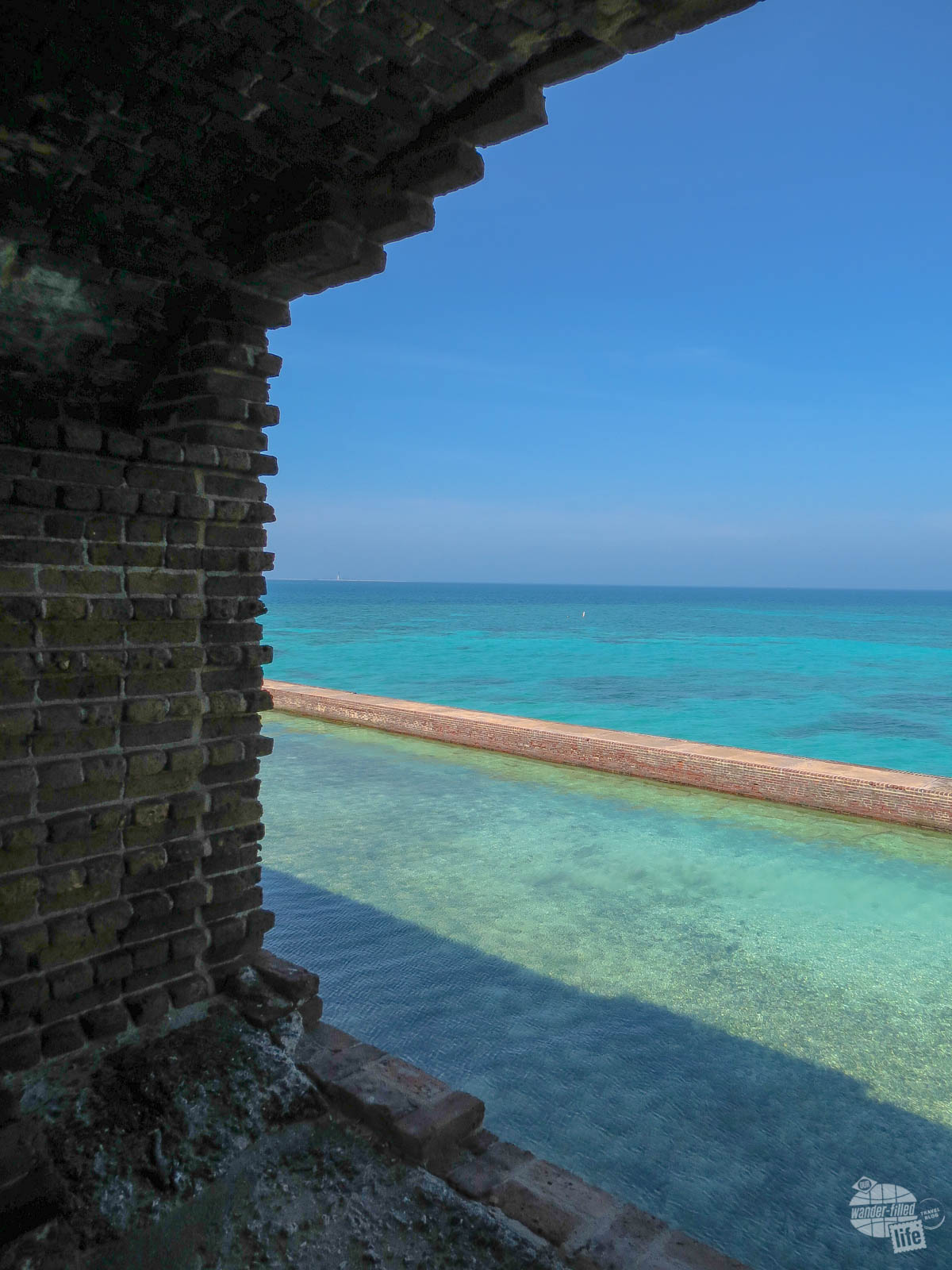
To fully explore this park, you’ll need your own boat. There are still plenty of opportunities for the rest of us, though. You can access Garden Key and Fort Jefferson by ferry or seaplane. Most visitors will opt for just a day-trip, which is plenty of time to see the highlights. If you’re up for some primitive camping, you can extend your trip to an overnight stay.
How to Get There
Getting to Dry Tortugas NP is not cheap or easy. Ferry service is provided from Key West aboard the Yankee Freedom III and costs nearly $200 for a day-trip. In addition to transportation to the fort, the ticket includes breakfast and lunch, the park entrance fee and a tour of Fort Jefferson. Complimentary snorkeling equipment is also available.
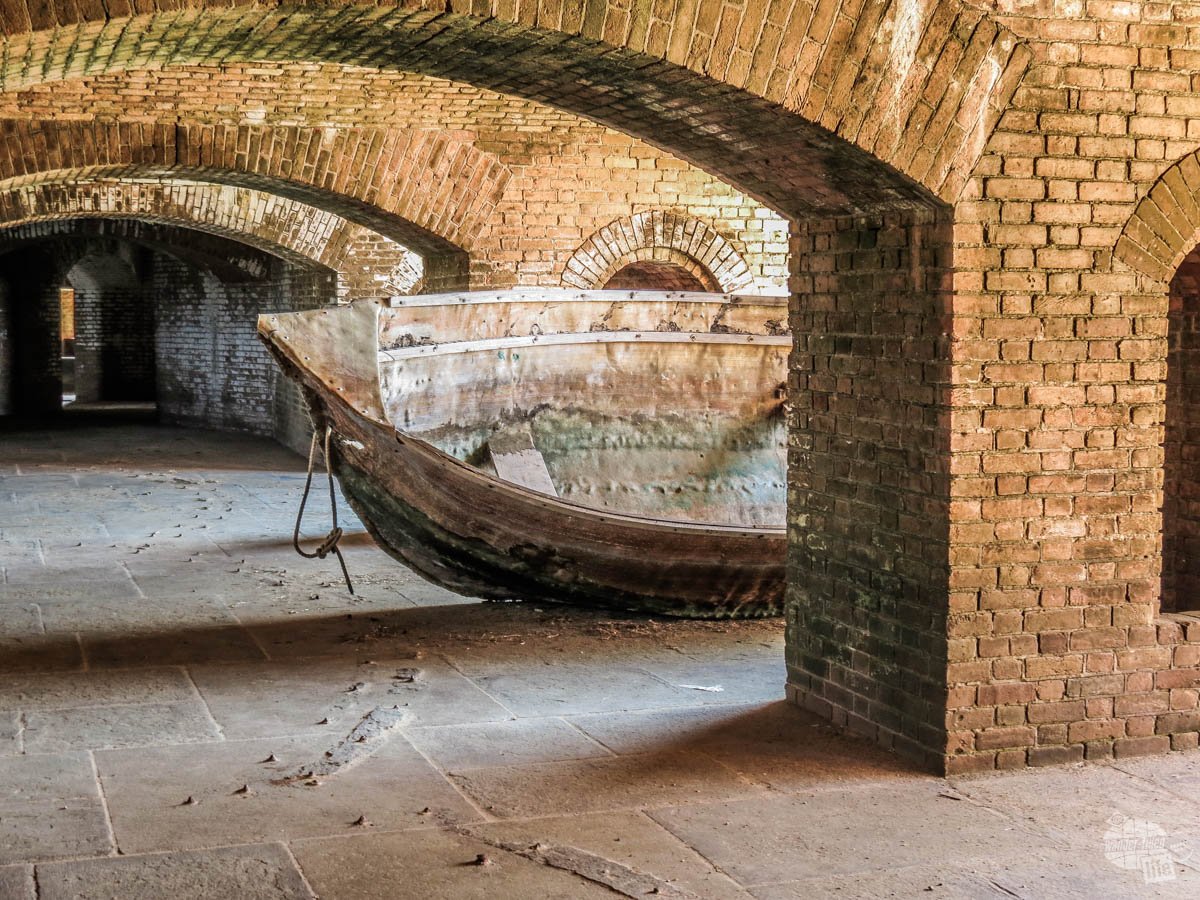
The boat ride is a little over two hours each way and you’ll have about four hours at Garden Key. If you’re interested in spending a lot of time snorkeling or swimming, it might feel rushed. If you’re just exploring the fort, walking the sea walls and hanging out on the beach, though, four hours is likely enough.
Another option for getting to Dry Tortugas is by seaplane. While costs are a bit higher (currently, more than $350), transportation time is less and there are options for a half- or full-day visit.
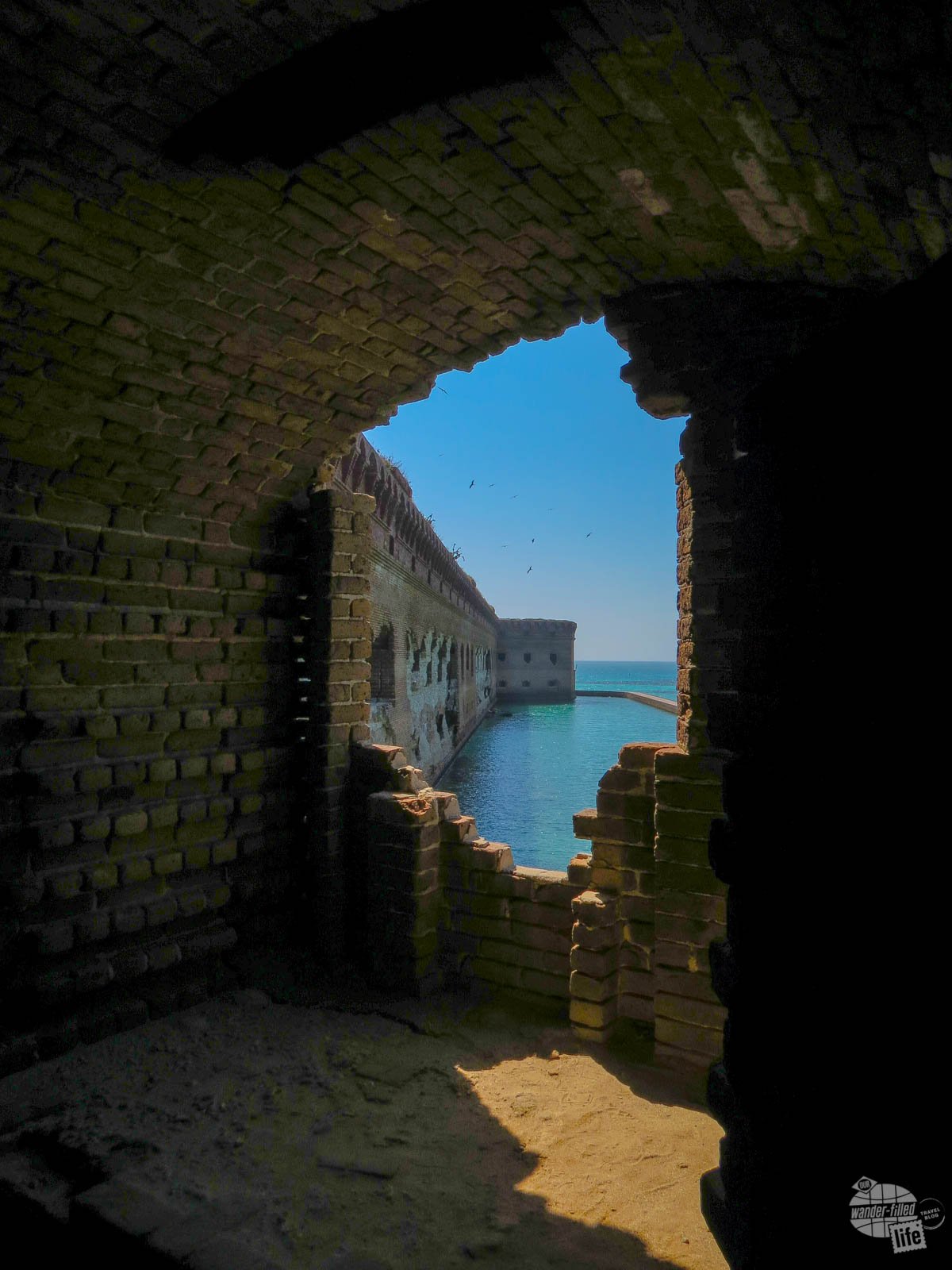
When we visited the park in 2012, we took the ferry for a day trip. Our boat ride was pleasant and we enjoyed the tour of the park. If we ever return, we’ll likely plan to camp for a night.
Find out more about getting to Dry Tortugas National Park.
Where to Stay in Key West
With an early morning ferry or seaplane ride and a full day of exploring, you’ll likely want to spend a night or two in Key West. The drive from Miami to Key West takes about three hours. Trying to do that drive on top of the transportation to and from Fort Jefferson would make for a very long day. You also have to consider that there is only one highway through the Florida Keys, so if there is traffic there is no getting around it.
Read more about our recent stay in Key West
We do not recommend trying an early morning drive from Miami to catch the ferry. On a previous trip, Grant and his buddy, Bill, tried to make it down to the ferry from Key Largo and missed the boat. Fortunately, he had not bought tickets but, still, it was an early morning wake up and drive for nothing.
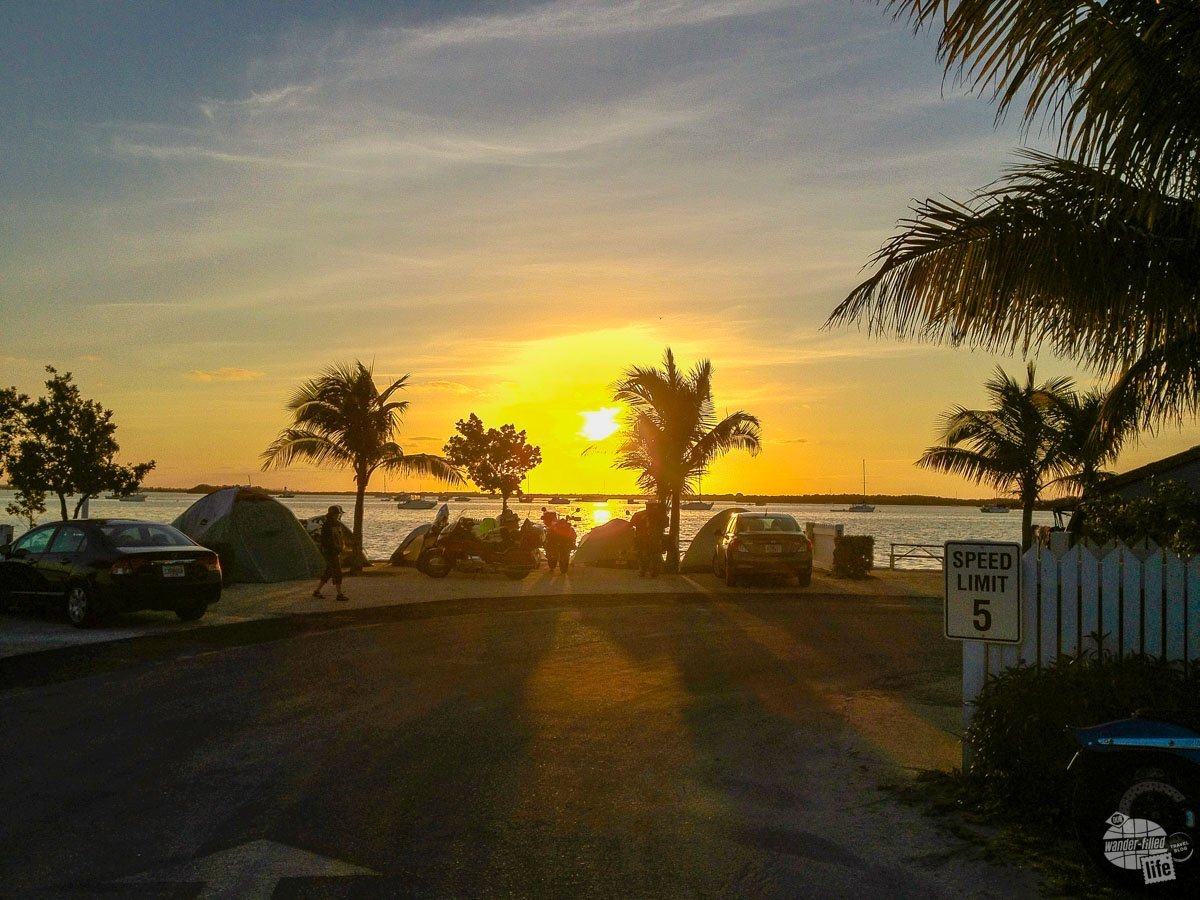
Additionally, the Florida Keys (especially, Key West) are worth a couple of days on their own. If you have the extra time, we highly suggest you take a day to really enjoy the drive through the Keys and explore a little.
During our visit, we spent one night at the DoubleTree and tent-camped at Boyd’s Key West Campground. It’s been a few years since our stay but we would recommend both based on our experience. Getting a hotel room or campground can be difficult (and expensive), depending on the time of year. Don’t wait until the last minute if you want options.
Book the Hotel | Read TripAdvisor Reviews
On our most recent visit to Key West, we used a couple of Hilton Free Night certificates to stay at the resplendent Casa Marina Key West.
The hotel is on the south end of the island, not far from the Southernmost Point and has an excellent beach and restaurant. We really enjoyed our stay here but would not normally spend anywhere close to that much money were it not for our free night certificates.
Book the Hotel | Read TripAdvisor Reviews
Where to Eat in the Florida Keys
In Key West, we recommend Garbo’s Grill. Their menu of shrimp, Korean BBQ and fish tacos is absolutely perfect for the Keys. They also offer burgers and hot dogs. When we visited in 2012, Garbo’s Grill was just a tiny food cart way before the food truck movement was popular.
We’ve consistently recommended Garbo’s since then. In the meantime, Garbo’s has grown and is now a full-fledged food truck located on Caroline Street.
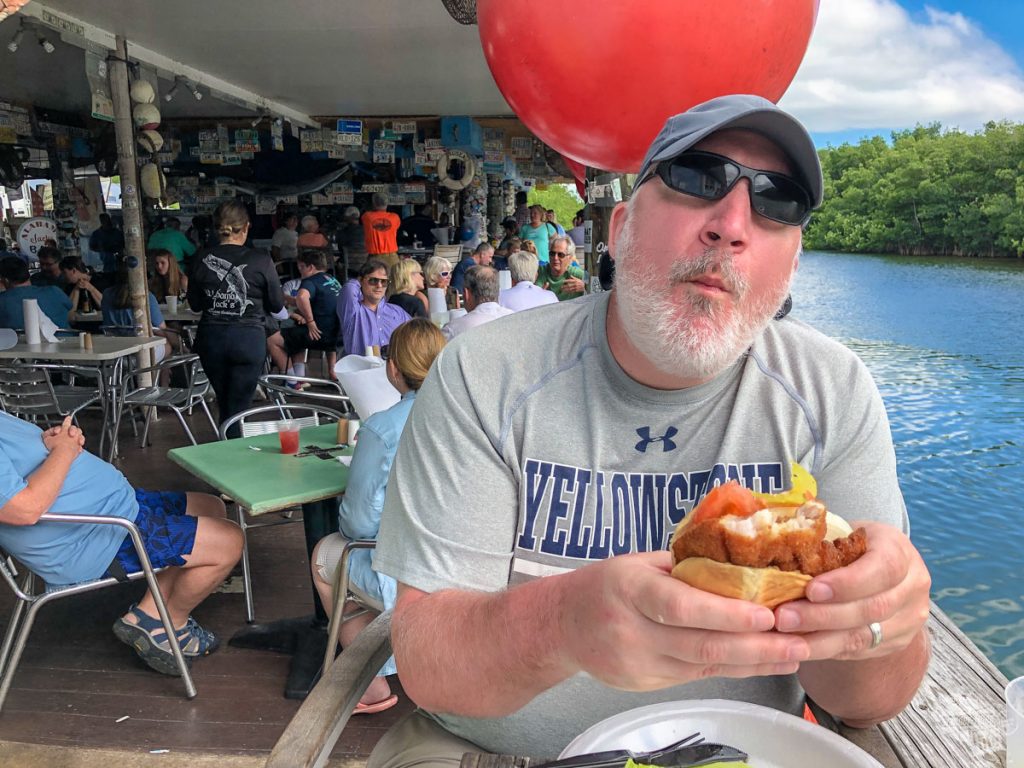
For something a bit more traditional, head to the other end of the Florida Keys to Alabama Jack’s. Located along Card Sound Road, Alabama Jack’s is an open-air restaurant and bar serving seafood and cocktails. While it may look a little rough (it has survived several hurricanes), the food and drinks are tasty!
On our most recent visit, we enjoyed conch fritters, fish sandwiches and cocktails overlooking the mangroves. It doesn’t get any better than that!
Pro tip: The Card Sound Road is listed as a toll road, but the toll is cheap and it moves a lot faster than US 1.
Final Thoughts on the South Florida National Parks
The four South Florida national parks offer a variety of opportunities not found in many other national parks. Instead of bison and bears, you’ll find birds and alligators. While there are a few hiking trails, to really explore you’ll need to get out on (or in) the water. Instead of reduced winter hours or closures, you’ll find winter is one of the busiest times of the year, for good reason.
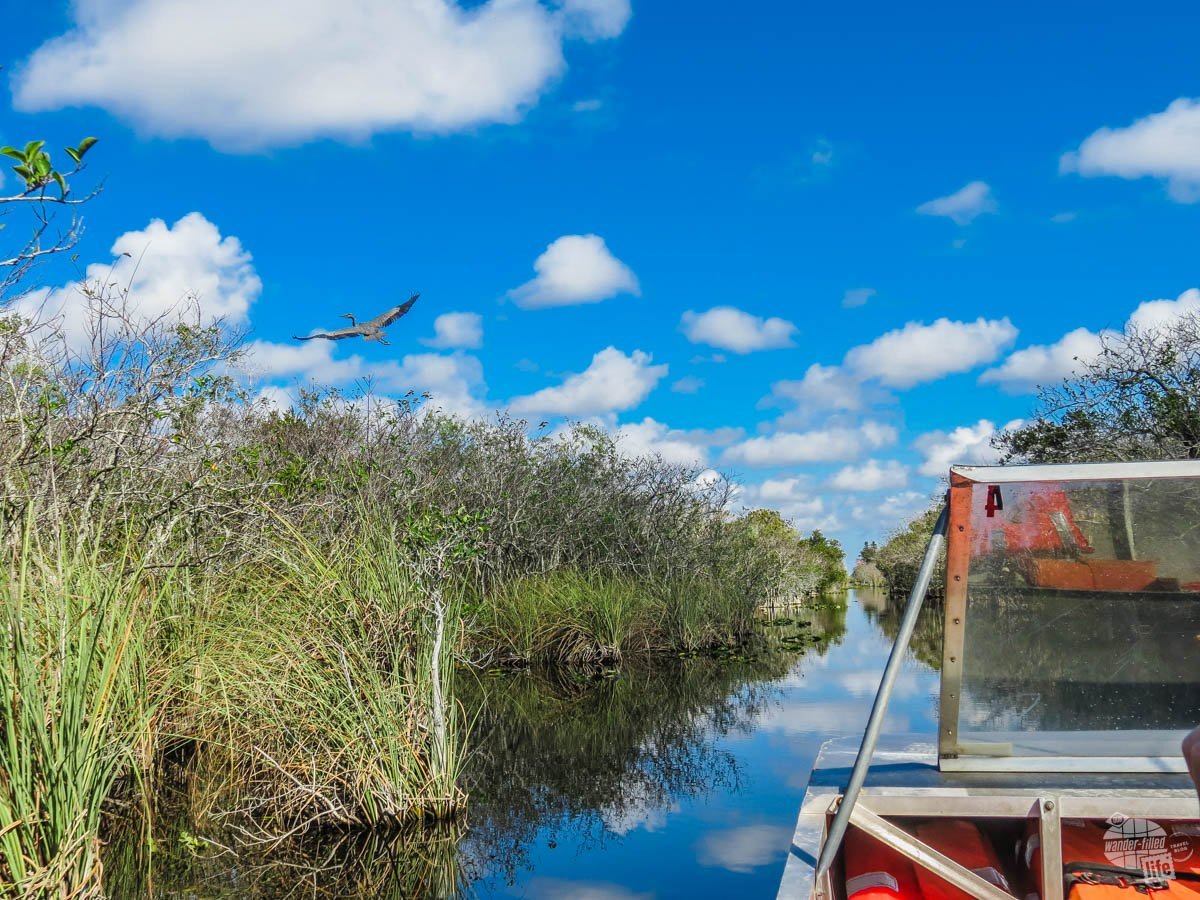
What we like most, in addition to the unique landscapes and warm weather, is how accessible the parks are. For drivers, you can easily reach Miami via I-95 or the Florida Turnpike. If you prefer to fly, you can choose between Miami or Fort Lauderdale airports.
While getting to Dry Tortugas NP takes a bit of planning, the other three parks are very easy to reach from anywhere in the greater Miami area. And you can easily see all four of them in about a week.
If you haven’t visited the South Florida national parks yet, I say pack your sunscreen and get going!
Travel Resources
What do you use to find a flight?
We use Skyscanner to find deals on flights. Skyscanner has a great interface and compares tons of airlines for the best pricing and routing. That said, it does not always have every airline and some airlines will have better deals on their website. Still, Skyscanner is a great place to start.
Click here to search for a flight.
What do you use to find a hotel?
We typically stay at Hilton properties, so we use the Hilton website. You can find good Hilton Honors discounts or AAA discounts for a hotel there. We make great use of our free night certificates from our Hilton Honors American Express.
Click here to book a Hilton property.
If there are no Hilton properties available, we use TripAdvisor to read reviews and book the hotel. We find we can get the best price that way.
Click here to search for a hotel.
We recently partnered with Stay22 to add interactive maps to each of our destination posts. This will allow you to see a plethora of hotels and vacation rentals all in one responsive map of the area.
What if I need more space than I can get at a hotel?
We use Vrbo for the times when we have rented a cabin for a weekend getaway, like this cabin in Townsend, TN, or needed to rent a house for a large family vacation. We had a great experience with them in terms of refunding deposits when COVID hit and will continue to use them.
Click here to search for a vacation rental.
Who do you use for rental cars?
As a general rule, we book with Hertz for rental cars. We have had nothing but good experiences with them. Plus, we really like unlimited mileage and not worrying about crossing state lines. We have even rented from Hertz overseas in both Slovenia and Croatia.
Click here to book a rental car.
How about booking a cruise?
We have found some amazing prices for booking a cruise through Cruise Direct. We have saved a lot of money on our cruises compared to what we found elsewhere, making a last-minute Bahamas cruise even cheaper.
Click here to book a cruise.
What if I want to rent an RV?
We highly recommend Outdoorsy for RV rentals. We rented a camper van for a week to visit Rocky Mountain National Park for the elk rut and Custer State Park for the Buffalo Round-Up and had a blast. The program was easy to use and we really enjoyed the freedom of having a camper van for that trip.
Click here to rent an RV.
What do you use for booking tours?
We don’t often book tours. Typically, we like to do stuff on our own. That said, there are some experiences you can’t have any other way. So, when we do want to book a tour, we always check Viator first.
Click here to book a tour.
Do you use anything to get discounts on the road?
We make extensive use of both Good Sam and AAA on the road. Good Sam is normally regarded as a discount card for RVers at campgrounds and Camping World but anyone can use the 5 cents off a gallon at the pump at both Pilot and Flying J.
Click here to get a Good Sam membership.
We have had AAA as long as we have been married and it has more than paid for itself in discounts at hotels, aside from the peace of mind of having roadside assistance. Add in paper maps and the ability to get an international driver’s license and it is more than worth it for any traveler out there.
Click here to get a AAA membership.
Pin It!



